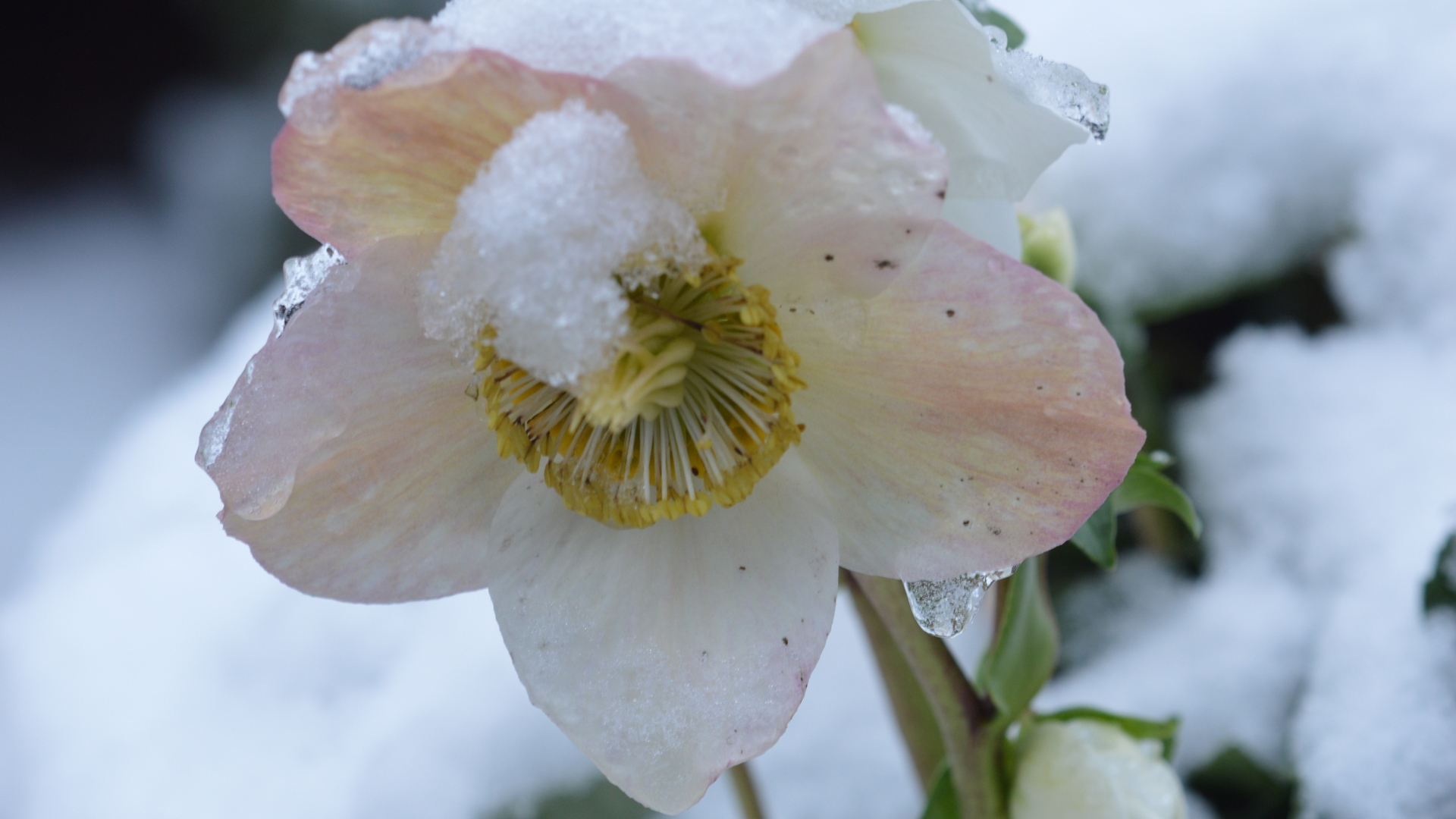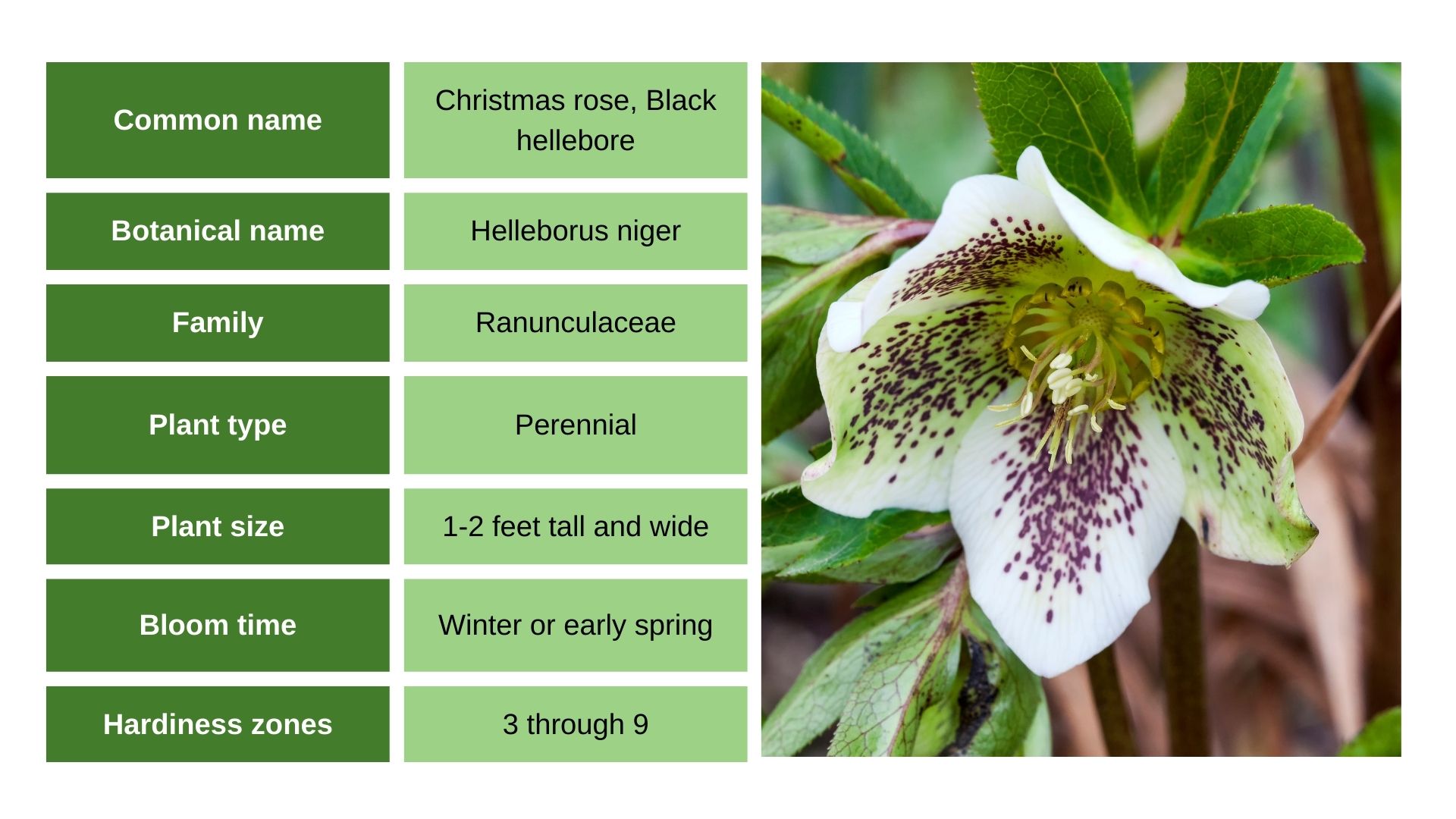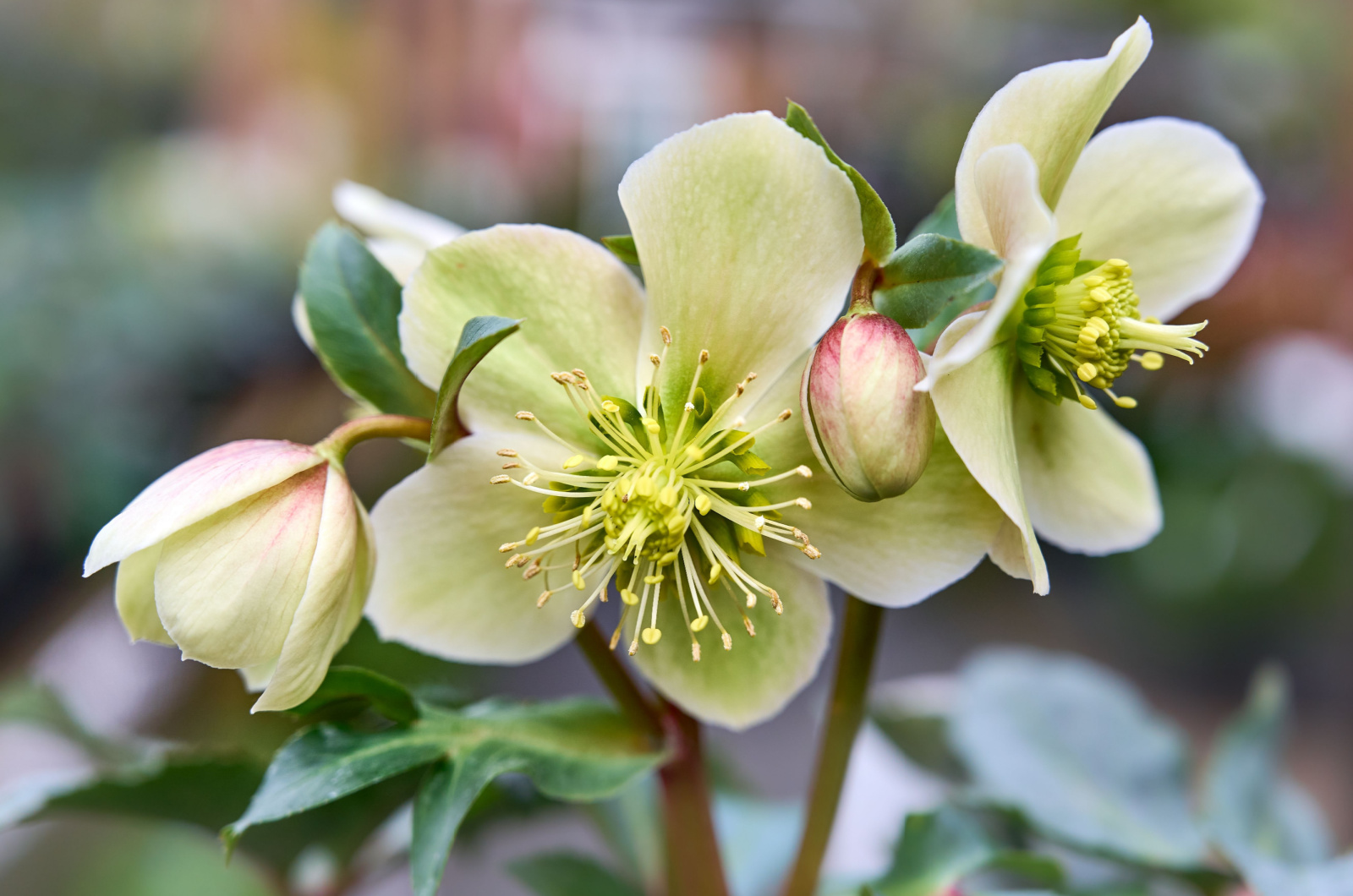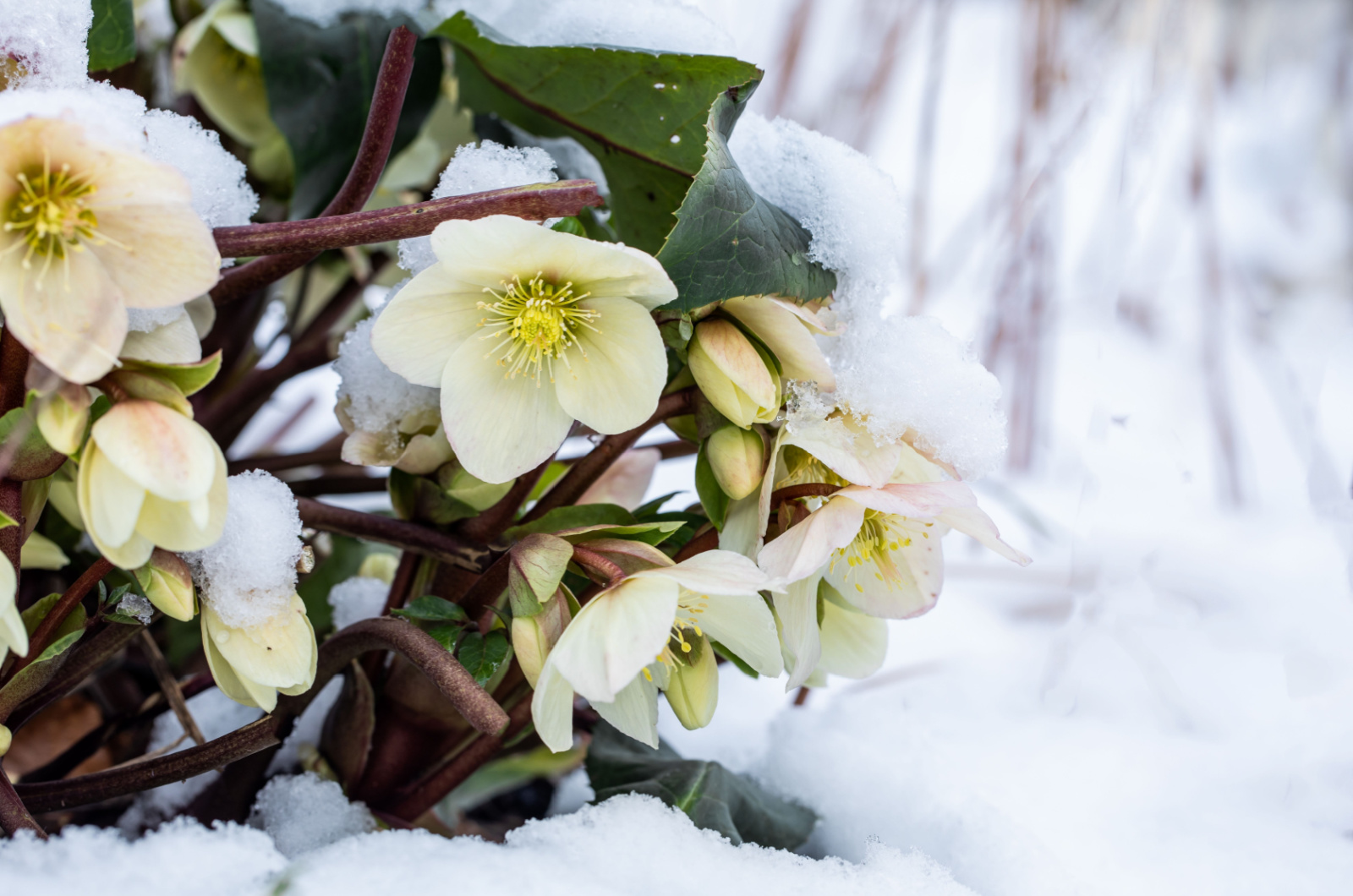Add some winter magic to your garden with the famous Christmas rose, otherwise known as Hellebore.
If you live in regions with warmer climates, these beautiful pale white flowers will adorn your garden around Christmas time. For those with slightly colder winters, they’ll bloom in late winter or early spring.
These rose-like flowers combine perfectly with waxy, dark green leaves that form low-lying clumps, which is what makes these plants excellent ground covers.
In this article, we are going to share some useful tips on how to grow and care for Christmas roses. Let’s get started!
What Is A Christmas Rose?
Christmas rose, otherwise known as Helleborus niger, is a perennial plant that blooms around the holiday season.
The plant was named after the time of year it blooms, but there’s also an old folktale that says it grew out of nowhere in the snow, blossoming from the tears of a little girl who couldn’t find anything to give Christ in Bethlehem.
Their nodding flowers look like rose buds before they completely unfurl, hence another nickname!
It originates from Europe, which is where it blooms around the holidays. For those in colder climates, hellebore will bloom probably in early spring.
Also read: 16 Flowers That Bloom & Thrive In Mild Winters
How To Plant a Christmas Rose
The first thing you should do is find an appropriate place to plant your rose. Pick a place with well-draining, neutral, or alkaline soil. It should receive full sun in winter, but it can adjust to full or partial shade in summer.
The best time to plant a hellebore would be in spring or fall. Once you’ve successfully planted your Christmas rose, make sure that its soil never completely dries out in the future.
This is not to be confused with another type of hellebore called the Lenten rose, also known as Helleborus orientalis. This hellebore variety is often mixed up with Christmas roses – just make sure to check their botanical name!
How To Take Care Of A Christmas Rose
• Soil requirements: Fertile, well-draining, neutral to alkaline
• Water requirements: Frequent
• Light requirements: Full sun in winter, full to partial shade in summer
It’s super easy to take care of this perennial. Keep reading to find more details about Christmas rose plant care.
Soil Requirements
Well-draining soil with neutral to alkaline pH will keep your Christmas rose happy and healthy. You can make it more fertile and porous by applying compost to it.
Light Requirements
This plant likes full sun exposure during winter. However, too much sun in the summer can lead to brown and scorching leaves.
It’s best to grow your Christmas rose under a deciduous tree because it gets summer shade from the leaves and then the leaves fall, which allows for full sun penetration.
Temperature Requirements
These are hardy plants that can endure low temperatures. However, if you live in a northern region, you should add mulch and protect your Christmas rose from harsh winds. Hellebores can adapt to different humidity levels.
Water Requirements
We’ve already mentioned that you should keep the soil moist all the time. This is very important for freshly planted Hellebores because they dry out more quickly.
Don’t overwater your plant as it might lead to rotting. You should check the soil before watering to see if the top few inches of the soil have dried out.
Fertilizer Requirements
These perennials generally prefer growing in an organically rich soil. I would advise adding compost in the spring, or you can use some appropriate fertilizer.
Related: Figure Out The Ideal Amount Of Compost You Should Add To The Soil
Pruning
Prune older or diseased leaves when you see the new ones emerging. Fresh leaves will quickly replace the old ones. Cut the stems of the leaves close to their bases.
For more information about pruning, make sure to check out this video:
https://www.youtube.com/watch?v=pFA2QrbqWNc
Propagation
You can propagate Christmas roses by seed or by division. Divide them in late winter or early spring – simply dig out the plant and see if there are any buds on the crown. Divide the roots so that each division has at least two buds.
Or you can collect the seeds produced by your plant and sow them immediately in outdoor containers. They should germinate in the fall. After germination, you can either transplant them in the garden or leave them to grow in containers.
These are some plants that can be sown in the fall and bloom in winter. For more, check: 10 Captivating Winter-flowering Shrubs To Plant In Fall
Common Issues With Christmas Rose
Hellebores are susceptible to aphids and slugs. Check the undersides of the leaves to see if there are any aphids crawling around – if so, spray them with neem oil.
Slugs are easily spotted and they can do far more damage than aphids. Keep slugs away by simply placing aluminum foil around the plant.
Christmas roses are also susceptible to crown rot and leaf spot. When planting, make sure that the crown is slightly above the ground level. This will prevent crown rot.
To avoid leaf spot, make sure not to water overhead and get the leaves wet. Also, you shouldn’t be watering your Christmas rose in the evening.
Also check: The 12 Plants Of Christmas





